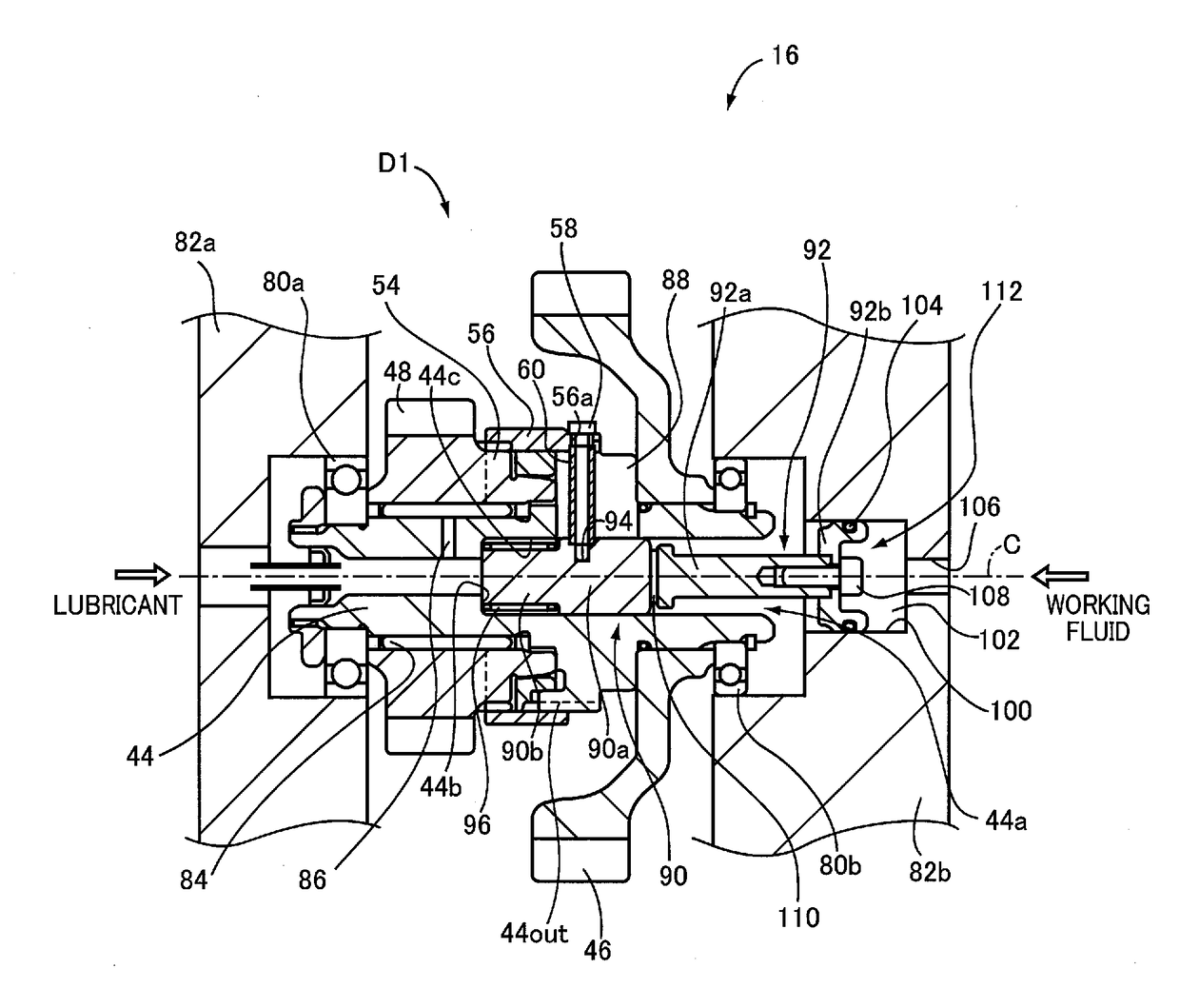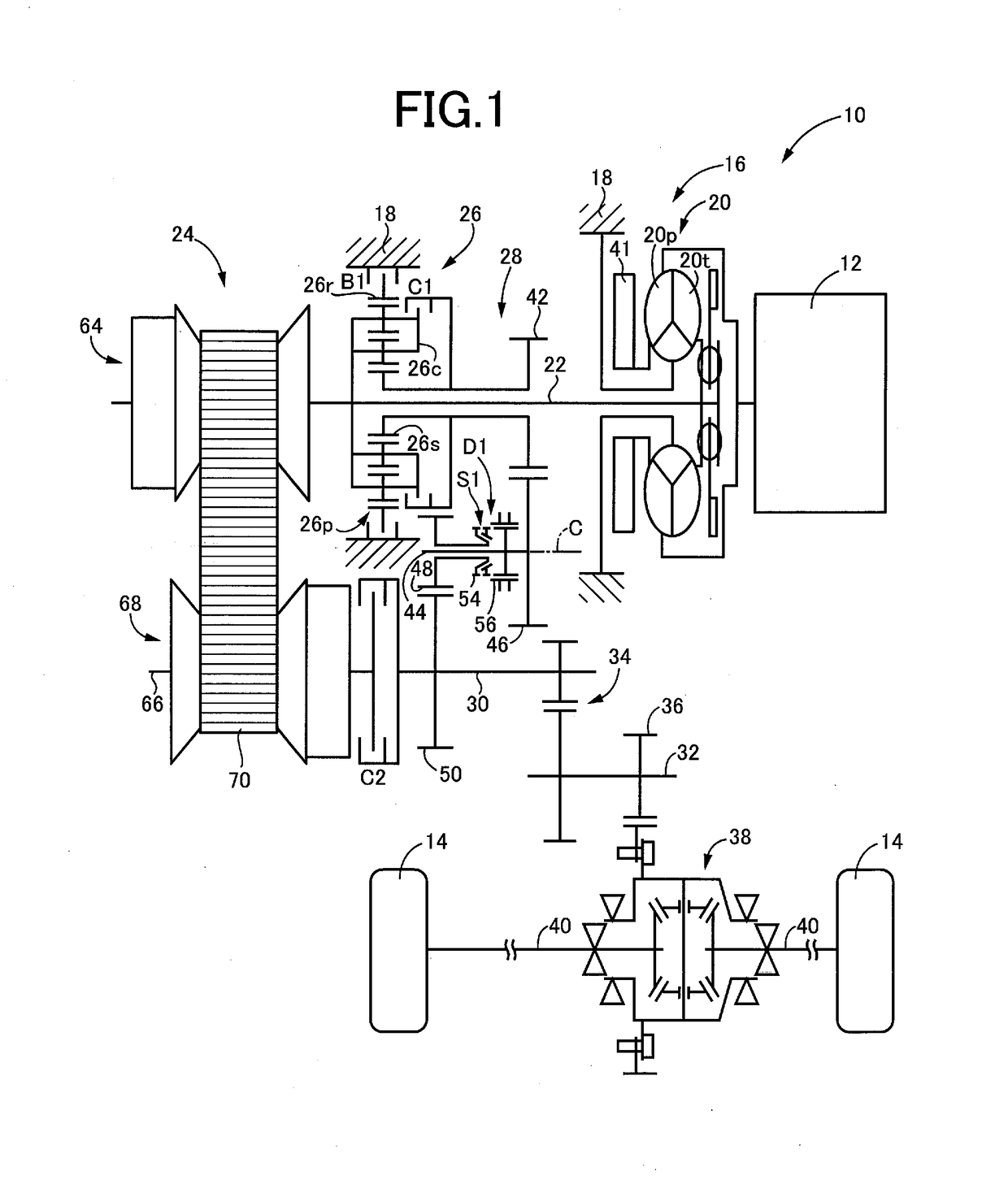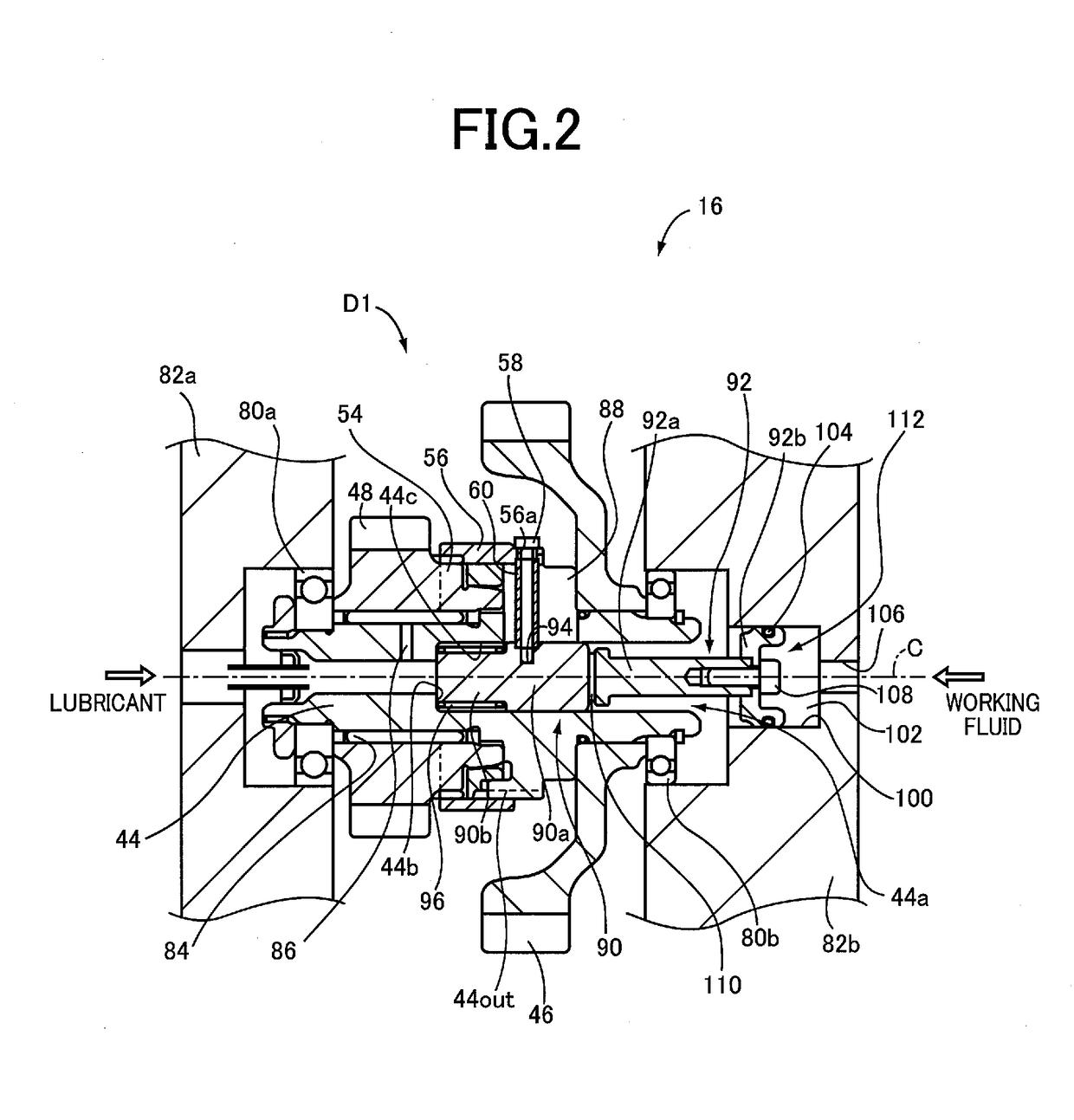Vehicular power transmitting system
a transmission system and transmission device technology, applied in the direction of vehicle sub-unit features, interengaging clutches, gearing, etc., can solve the problems of instability of the the risk of deterioration of the intended sealing function of the oil seal fitted on the piston, etc., to achieve increased operational reliability, efficient movement, and high stability
- Summary
- Abstract
- Description
- Claims
- Application Information
AI Technical Summary
Benefits of technology
Problems solved by technology
Method used
Image
Examples
first embodiment
[0040]FIG. 1 is the schematic view showing an arrangement of a vehicle 10 having a power transmitting system 16 according to one embodiment of this invention. As shown in FIG. 1, the vehicle 10 is provided with a vehicle drive power source in the form of an engine 12, drive wheels 14, and the power transmitting system 16 disposed between the engine 12 and the drive wheels 14. The power transmitting system 16 includes, within a stationary member in the form of a housing 18: a fluid-operated power transmitting device in the form of a known torque converter 20 connected to the engine 12; an input shaft 22 connected to the torque converter 20; a continuously variable transmission mechanism in the form of a known belt-and-pulley-type continuously variable transmission 24 (hereinafter referred to as “continuously variable transmission 24”) connected to the input shaft 22; a forward / reverse switching device 26 connected to the input shaft 22; a power transmitting mechanism in the form of a...
second embodiment
[0068]Then, another embodiment of this invention will be described. It is to be understood that the same reference signs as used in the first embodiment will be used to in the following embodiment, to identify the corresponding elements, which will not be described redundantly.
[0069]FIG. 4 is the schematic view showing an arrangement of the vehicular power transmitting system 16 according to another embodiment of this invention, when the dog clutch D1 having the synchro-mesh mechanism is placed in its engaged state. In the present second embodiment, the first piston 90, and an axial end portion of a second piston 200 which is on the side of the first piston 90, are accommodated within the center bore 44a formed in the gear mechanism counter shaft 44, such that the first piston 90 and the second piston 200 are disposed coaxially with the gear mechanism counter shaft 44 having the axis C. The first piston 90 is located in an axial end portion of the center bore 44a, which is on the si...
PUM
 Login to View More
Login to View More Abstract
Description
Claims
Application Information
 Login to View More
Login to View More - R&D
- Intellectual Property
- Life Sciences
- Materials
- Tech Scout
- Unparalleled Data Quality
- Higher Quality Content
- 60% Fewer Hallucinations
Browse by: Latest US Patents, China's latest patents, Technical Efficacy Thesaurus, Application Domain, Technology Topic, Popular Technical Reports.
© 2025 PatSnap. All rights reserved.Legal|Privacy policy|Modern Slavery Act Transparency Statement|Sitemap|About US| Contact US: help@patsnap.com



